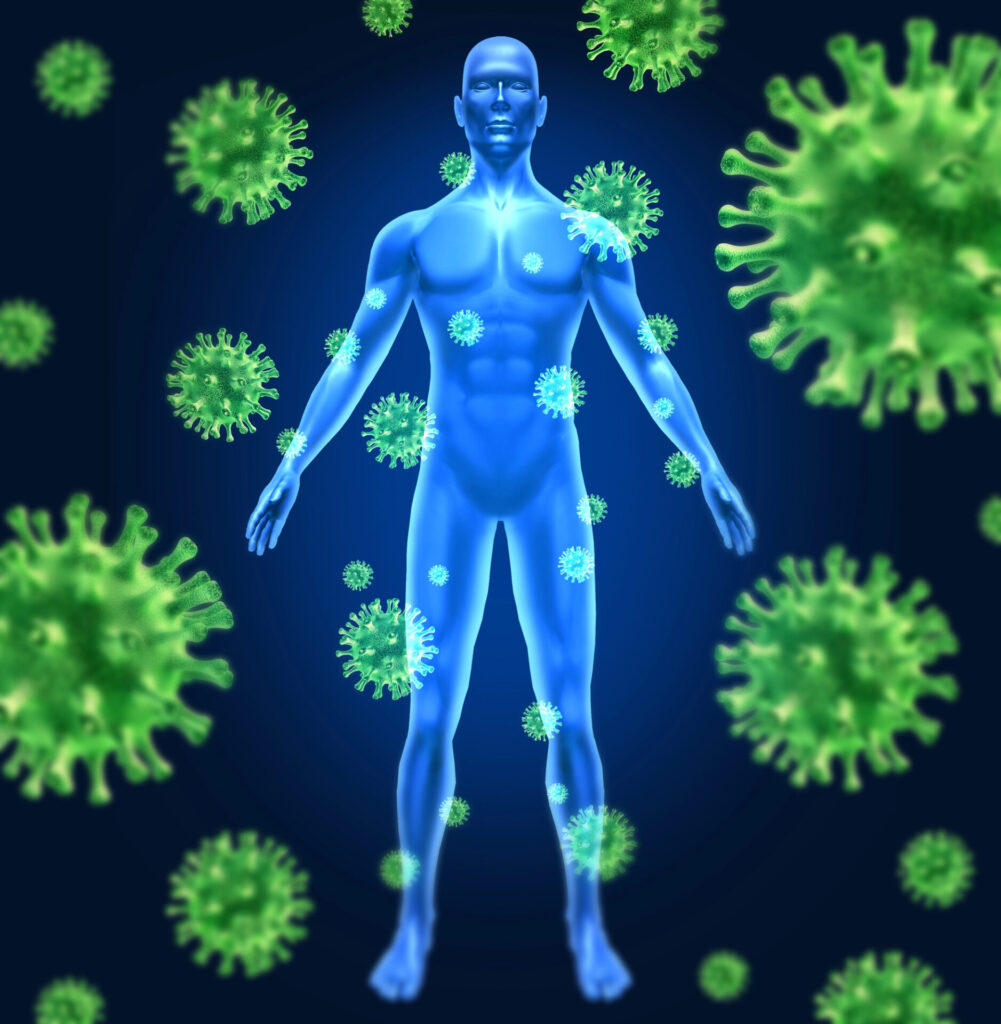Chronic stress is linked with a range of serious diseases—how CBD can ease stress and anxiety, enhance sleep, support immunity and promote overall wellness.
Stress isn’t just inconvenient or unpleasant—it affects every aspect of the human body, playing a pivotal role in anxiety disorders, mood disruptions, sleep disturbances, immune issues and a range of serious illnesses. But it’s so commonplace and widely accepted, practitioners may overlook stress relief as a central component of a personalized wellness protocol.
“Stress increases our general susceptibility to various ailments, lowering our immune system over the long run,” says naturopathic physician Chris Meletis, ND. “Chronic stress also ultimately can lead to reduced levels of cortisol and cortisone. With adrenal fatigue associated with dampened levels of hydrocortisone present, the body’s default position for adrenal defense to handle perceived stress is the release of adrenaline (epinephrine) from the adrenals—which is the trigger for classical fight, flight or fright, the latter being the deer-in-the-headlights phenomenon.”
In the short term, stress interferes with sleep, dampens mood and impairs cognitive function, memory and performance. Over time, it drives inflammation, dysregulates innate and adaptive immune responses and ongoing stress is implicated in a wide variety of serious conditions, including diabetes, cardiovascular disease, dementia, Alzheimer’s and cancer.1, 2, 3, 4
Furthermore, stress exists in a complex, nuanced relationship with various factors that influence and feed into each other. Stress disrupts sleep, linked with increased inflammation and long-term consequences of its own. Inflammation exacerbates pain, and stress also heightens pain sensitivity, which in turn disturbs sound sleep. Insufficient sleep is likewise associated with a significantly higher incidence of anxiety and mental distress.5, 6, 7
“A remedy to this modern plight is desperately needed,” says Meletis. “In my clinical practice, I routinely use cannabidiol (CBD) as a way to support a healthy stress response, and to address related factors such as pain, inflammation and sleep.”
Derived from the flowers, leaves and stalks of the hemp plant, CBD works by interacting with the endocannabinoid system (ECS), a complex cell signaling mechanism that exists in humans and other mammals. The ECS is known to influence a range of vital physiological processes, including pain sensation, mood, memory and learning, inflammation, immunity and sleep. Emerging research also validates its prominent and extensive role in stress response and the processing of anxiety and fear.8, 9, 10, 11, 12, 13
The ECS consists of three key components: endogenous cannabinoids produced by the body; enzymes responsible for the synthesis and breakdown of endocannabinoids; and cannabinoid receptors throughout the body, with two primary types—CB1 receptors located largely in the brain and central nervous system, and CB2 receptors mainly in immune cells. CBD and other cannabinoids have been shown to bind to cannabinoid receptors, impacting endocannabinoid levels, modulating neurotransmitter release and helping to maintain homeostasis.14, 15, 16
Along with CBD, hemp oil extract is rich in terpenes, a diverse class of aromatic compounds found in a variety of plants. Terpenes influence the effects of cannabinoids, modifying how cannabinoids interact with receptors and enhancing their benefits, and some terpenes have therapeutic properties of their own. While most terpenes don’t directly interact with cannabinoid receptors, beta-caryophyllene is an exception.
“Beta-caryophyllene governs the activation of one of the two primary receptors in the endocannabinoid system,” says Meletis. “It’s found in many herbs, including lavender, and is thought to play a role in lavender’s ability to help people sleep longer. Beta-caryophyllene also supports a healthy inflammatory and pain response and promotes relaxation and sleep.”17, 18
A number of studies confirm the potential of CBD and beta-caryophyllene to soothe the nervous system, alleviate stress and anxiety and address contributing factors like sleep disturbances, inflammation and pain. Some highlights:
- CBD has a calming influence on central nervous system activity, and research validates its ability to prevent anxiety resulting from chronic, unpredictable stress. In two studies, CBD given prior to a simulated public speaking test significantly decreased anxiety during the speech, reducing stress, cognitive impairment and discomfort. In patients with anxiety disorder, CBD treatment led to lower anxiety scores within the first month. CBD’s anti-stress properties may enhance mood and relieve depression, and studies demonstrate CBD’s positive impact on serotonin levels in the brain.19, 20, 21, 22, 23, 24
- The ECS is involved in regulating the circadian sleep-wake cycle, and emerging research points to a role for CBD in supporting restful sleep. In one study, participants who received 160mg CBD slept more and awakened less during the night compared with placebo. Other research yields similar results, showing improved sleep quality and duration and diminished anxiety. Beta-caryophyllene also has anxiolytic-like properties and can calm stress, promote relaxation and encourage sleep.25, 26, 27, 28
- Many studies, both human and animal, highlight the anti-inflammatory effects of CBD. In research, CBD has been shown to activate receptors involved in pain perception and inflammation, reduce oxidative stress, suppress the production of pro-inflammatory cytokines, increase anti-inflammatory cytokines, inhibit iNOS expression and regulate immune response. Other studies suggest CBD’s benefits for rheumatoid arthritis pain.29, 30, 31, 32, 33, 34
- Human trials are validating the pain-relieving properties of CBD, with research demonstrating its ability to not only inhibit inflammation but also improve serotonin levels, support healthy pain responses and ease neuropathic pain. In one study, 53 percent of patients reduced or eliminated opioid use within eight weeks after beginning treatment with CBD-rich hemp extract. Other research links CBD with improvements in pain, walking, muscle spasms and quality of life measures for people with pain. Along with CBD, beta-caryophyllene has also been shown to decrease pro-inflammatory mediators and promote a healthy inflammatory and pain response.35, 36, 37, 38, 39
The therapeutic potential of CBD is profound—but choosing the right supplement is critical. Hemp is grown in a range of conditions and may contain GMOs and varying levels of THC. Additionally, extraction and processing methods may leave residual solvents and impurities in the final product. Opt for CBD supplements made from non-GMO hemp, using specific strains that don’t contain significant amounts of psychoactive compounds. Choose those made with an extraction process designed to eliminate solvents and impurities and produce non-detectible THC content. And delivery system and bioavailability are key considerations.
“CBD has limited oral bioavailability because it’s fat-soluble and has extensive first-pass metabolism,” says Meletis. “CBD absorption also can vary among different individuals. I recommend a type of technology known as VESIsorb, which improves absorption and bioavailability. A human study found CBD using VESIsorb technology was 4.4 times more bioavailable than CBD not using the technology.” The VESIsorb technology is shown to significantly enhance the absorption of beta-caryophyllene as well.40
For a comprehensive approach to stress relief, CBD should be combined with other validated ingredients that address contributing factors like sleep disruptions, inflammation and pain. Melatonin is known to normalize circadian rhythms and decrease sleep onset latency, increase total sleep time and significantly improve overall sleep quality. Curcumin, widely studied for its effects on joint comfort and inflammation, has been shown to ease pain that can interfere with sleep, and some research suggests it may have sleep-promoting activities of its own.41, 42, 43, 44
References
- Cohen S et al. Psychological stress and disease. JAMA. 2007 Oct 10;298(14):1685-7.
- Liu YZ et al. Inflammation: The Common Pathway of Stress-Related Diseases. Front Hum Neurosci. 2017 Jun 20;11:316.
- Rohleder N. Stress and inflammation – The need to address the gap in the transition between acute and chronic stress effects. Psychoneuroendocrinology. 2019 Jul;105:164-171.
- Mariotti A. The effects of chronic stress on health: new insights into the molecular mechanisms of brain-body communication. Future Sci OA. 2015 Nov 1;1(3):FSO23.
- Ahmad AH, Zakaria R. Pain in Times of Stress. Malays J Med Sci. 2015 Dec;22(Spec Issue):52-61.
- Abdallah CG, Geha P. Chronic Pain and Chronic Stress: Two Sides of the Same Coin? Chronic Stress (Thousand Oaks). 2017 Feb;1:2470547017704763.
- Blackwelder A et al. Effect of Inadequate Sleep on Frequent Mental Distress. Prev Chronic Dis 2021;18:200573.
- Lu HC, Mackie K. Review of the Endocannabinoid System. Biol Psychiatry Cogn Neurosci Neuroimaging. 2021 Jun;6(6):607-615.
- D’Angelo M, Steardo L Jr. Cannabinoids and Sleep: Exploring Biological Mechanisms and Therapeutic Potentials. Int J Mol Sci. 2024 Mar 22;25(7):3603.
- Patel S et al. Inhibition of restraint stress-induced neural and behavioural activation by endogenous cannabinoid signalling. Eur J Neurosci. 2005;21:1057–1069.
- Lafenetre P et al. The endocannabinoid system in the processing of anxiety and fear and how CB1 receptors may modulate fear extinction. Pharmacol Res. 2007;56:367–381.
- Maldonado R et al. The endocannabinoid system in modulating fear, anxiety, and stress. Dialogues Clin Neurosci. 2020 Sep;22(3):229-239.
- Rezende B et al. Endocannabinoid System: Chemical Characteristics and Biological Activity. Pharmaceuticals (Basel). 2023 Jan 19;16(2):148.
- Di Marzo V, Piscitelli F. The Endocannabinoid System and its Modulation by Phytocannabinoids. Neurotherapeutics. 2015 Oct; 12(4): 692-8.
- Fernández-Ruiz J et al. Cannabinoids. From Preclinical Models to Clinical Applications. Neurotherapeutics. 2015 Oct; 12(4): 793-806.
- Bow EW, Rimoldi JM. The Structure-Function Relationships of Classical Cannabinoids: CB1/CB2 Modulation. Perspect Medicin Chem. 2016 Jun 28; 8:17-39.
- Paula-Freire LI et al. The oral administration of trans-caryophyllene attenuates acute and chronic pain in mice. Phytomedicine. 2014;21(3):356-362.
- Galdino PM et al. The anxiolytic-like effect of an essential oil derived from Spiranthera odoratissima A. St. Hil. leaves and its major component, β-caryophyllene, in male mice. Prog Neuropsychopharmacol Biol Psychiatry. 2012;38(2):276-284.
- Appiah-Kusi E et al. Effects of short-term cannabidiol treatment on response to social stress in subjects at clinical high risk of developing psychosis. Psychopharmacology (Berl). 2020;237(4):1121-1130.
- Linares IM et al. Cannabidiol presents an inverted U-shaped dose-response curve in a simulated public speaking test. Braz J Psychiatry. 2019;41(1):9-14.
- Bergamaschi MM et al. Cannabidiol reduces the anxiety induced by simulated public speaking in treatment-naïve social phobia patients. Neuropsychopharmacology. 2011;36(6):1219-1226.
- Gulbransen G et al. Cannabidiol prescription in clinical practice: an audit on the first 400 patients in New Zealand. BJGP Open. 2020;4(1):bjgpopen20X101010.
- Rieder CR. Cannabidiol in Parkinson’s disease. Braz J Psychiatry. 2020;42(2):126-127.
- Blessing EM et al. Cannabidiol as a Potential Treatment for Anxiety Disorders. Neurotherapeutics. 2015 Oct;12(4):825-36.
- Lavender I et al. Cannabinoids, Insomnia, and Other Sleep Disorders. Chest. 2022;162(2):452-465.
- Carlini EA, Cunha JM. Hypnotic and antiepileptic effects of cannabidiol. J Clin Pharmacol. 1981;21(S1):417s-427s.
- Shannon S et al. Cannabidiol in anxiety and sleep: a large case series. Perm J. 2019;23:18–41.
- Crippa JA et al. Translational Investigation of the Therapeutic Potential of Cannabidiol (CBD): Toward a New Age. Front Immunol. 2018 Sep 21;9:2009.
- Burstein S. Cannabidiol (CBD) and its analogs: a review of their effects on inflammation. Bioorg Med Chem. 2015 Apr 1;23(7):1377-85.
- Philpott HT et al. Attenuation of early phase inflammation by cannabidiol prevents pain and nerve damage in rat osteoarthritis. Pain. 2017 Dec;158(12):2442-2451.
- Nagarkatti P et al. Cannabinoids as novel anti-inflammatory drugs. Future Med Chem. 2009 Oct;1(7):1333-49.
- Martinez Naya N et al. Molecular and Cellular Mechanisms of Action of Cannabidiol. Molecules. 2023 Aug 9;28(16):5980.
- Atalay S et al. Antioxidative and Anti-Inflammatory Properties of Cannabidiol. Antioxidants (Basel). 2019 Dec 25;9(1):21.
- Lowin T et al. Cannabidiol (CBD): a killer for inflammatory rheumatoid arthritis synovial fibroblasts. Cell Death Dis. 2020; 11:714.
- Costa B et al. The non-psychoactive cannabis constituent cannabidiol is an orally effective therapeutic agent in rat chronic inflammatory and neuropathic pain. Eur J Pharmacol. 2007;556(1-3):75-83.
- De Gregorio D et al. Cannabidiol modulates serotonergic transmission and reverses both allodynia and anxiety-like behavior in a model of neuropathic pain. Pain. 2019 Jan;160(1):136-150.
- Capano A et al. Evaluation of the effects of CBD hemp extract on opioid use and quality of life indicators in chronic pain patients: a prospective cohort study. Postgrad Med. 2020;132(1):56-61.
- Nichols JM, Kaplan BLF. Cannabis and Cannabinoid Research. Mar 2020.12-31.
- Scandiffio R et al. Protective Effects of (E)-β-Caryophyllene (BCP) in Chronic Inflammation. Nutrients. 2020;12(11).
- Knaub K et al. A Novel Self-Emulsifying Drug Delivery System (SEDDS) Based on VESIsorb(®) Formulation Technology Improving the Oral Bioavailability of Cannabidiol in Healthy Subjects. Molecules. 2019;24(16).
- Fatemeh G et al. Effect of melatonin supplementation on sleep quality: a systematic review and meta-analysis of randomized controlled trials. J Neurol. 2022 Jan;269(1):205-216.
- Ferracioli-Oda E et al. Meta-analysis: melatonin for the treatment of primary sleep disorders. PLoS One. 2013 May 17;8(5):e63773.
- Paultre K et al. Therapeutic effects of turmeric or curcumin extract on pain and function for individuals with knee osteoarthritis: a systematic review. BMJ Open Sport Exerc Med. 2021 Jan 13;7(1):e000935.
- Um MY et al. Curcuminoids, a major turmeric component, have a sleep-enhancing effect by targeting the histamine H1 receptor. Food Funct. 2022 Dec 13;13(24):12697-12706.






